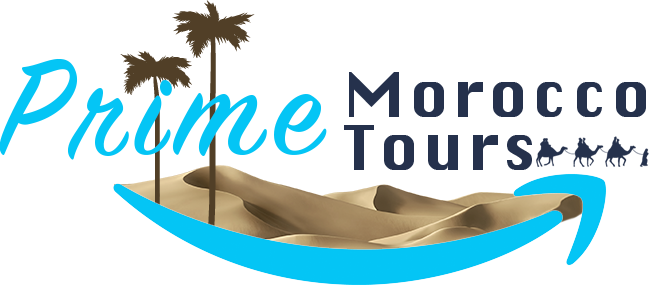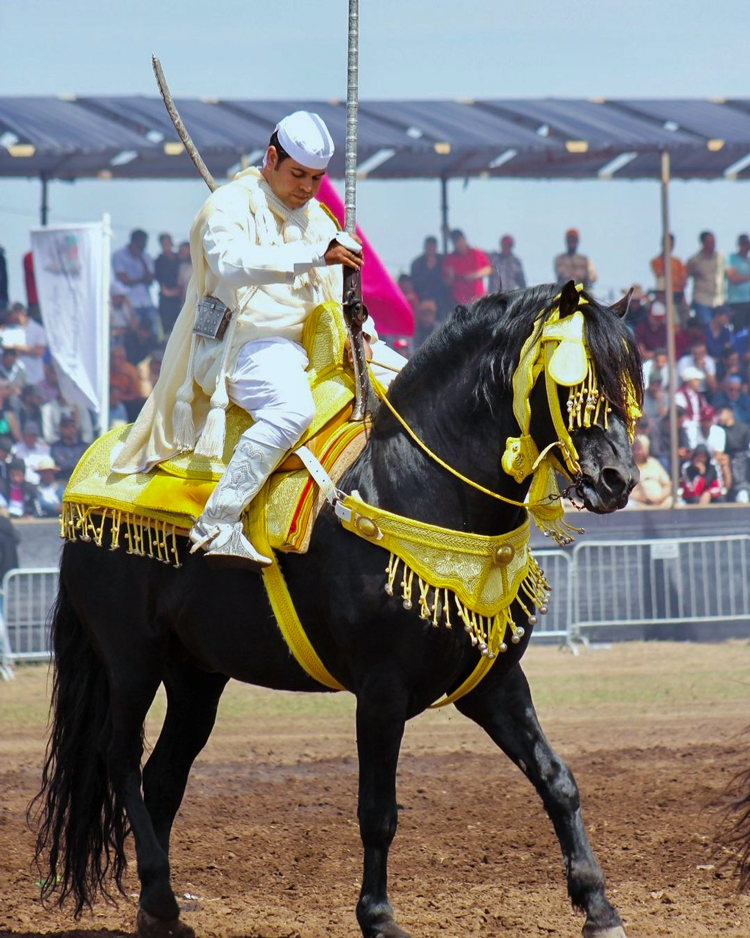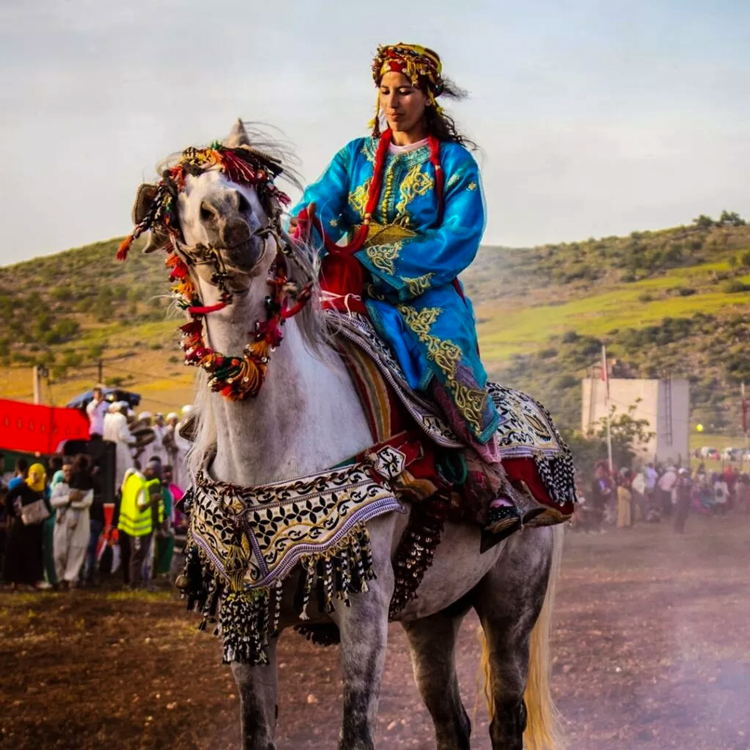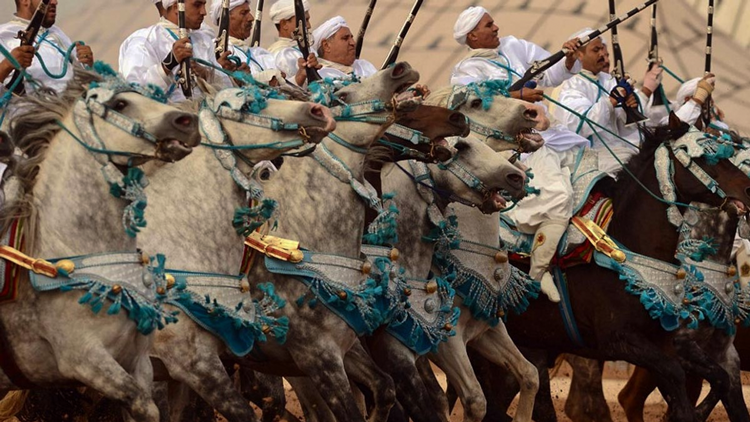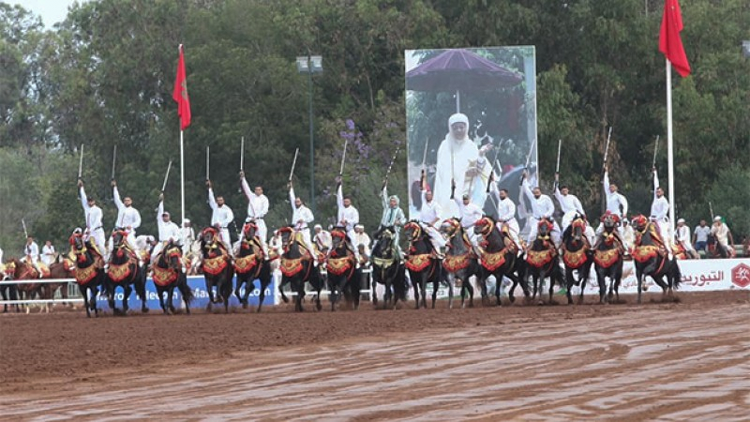Moroccan Tbourida: UNESCO Heritage & The Thrilling Equestrian Art
Tbourida, also known as Fantasia, is one of Morocco’s most mesmerizing and iconic cultural displays. With origins rooted deep in the country’s history, this equestrian art form is a powerful representation of Moroccan heritage, showcasing the skill, bravery, and honor of horsemen and their horses. Set against the backdrop of traditional festivals and significant celebrations, Tbourida is an event that captivates locals and visitors alike, providing a glimpse into Morocco’s historical ties to horses, warfare, and tribal pride.
Tours from Fes
Tours and trips that starts from fes to the desert and other several cities.
The History of Tbourida
Tbourida dates back several centuries, tracing its origins to ancient Berber and Arab traditions that celebrated military power and tribal warfare. Initially, it served as a military exercise to simulate cavalry charges and battle formations. The word “Tbourida” is derived from the Arabic word “Baroud,” meaning gunpowder, a key element of the performance.
Morocco’s equestrian culture has always been strong, influenced by Arab and Berber tribes that relied on horses not only for transportation but also for warfare and prestige. Over time, these military displays evolved into ceremonial performances, becoming an integral part of celebrations, especially during religious holidays such as Mawlid (the birthday of the Prophet Muhammad) and significant local festivals like Moussem, a gathering to honor local saints and Sufi leaders.
The Structure of a Tbourida Performance
A Tbourida performance is not just about galloping horses and firing rifles; it is a well-choreographed show of precision, unity, and discipline. The event typically takes place on a long field or track, where different teams of horsemen, known as sorbas, compete against each other. Each team is composed of a chief, called the mokaddem, and between 10 to 15 riders who are dressed in traditional attire, which varies by region but typically includes colorful, flowing robes, turbans, and ornate saddles.
The performance unfolds in the following stages:
- The Gallop: The sorba lines up at one end of the track, with riders holding long, curved rifles known as moukahla. At the mokaddem’s signal, the horsemen begin galloping in unison down the field, their horses kicking up dust as they pick up speed. The synchronization of their movement is a critical part of the spectacle, symbolizing a unified cavalry charge.
- The Gunfire: As the riders near the end of the track, they suddenly stand in their stirrups and fire their rifles into the air in a single, simultaneous explosion of gunpowder. The timing of the gunfire is crucial—teams are judged on their ability to fire as one, creating a dramatic, thunderous sound known as the Baroud. A perfect performance is when all rifles go off at the same instant, symbolizing unity and precision in battle.
- The Halt: After the gunfire, the riders quickly bring their horses to a halt, showcasing their horsemanship and control. The horses, trained for this moment, skid and stop on cue, further adding to the spectacle.
The Symbolism of Tbourida
Tbourida is more than just a performance; it carries deep symbolism tied to Moroccan identity, pride, and history. Each element of the show—from the horses to the rifles and the riders’ attire—represents aspects of Moroccan culture and heritage.
- Horses: In Moroccan culture, horses symbolize power, nobility, and freedom. The Barb horse, a breed native to North Africa, is often used in Tbourida. Known for its endurance, strength, and agility, this breed has been prized in Morocco for centuries, particularly by Berber and Arab tribes.
- Rifles: The moukahla rifles used in the performance are often elaborately decorated, reflecting the artistry and craftsmanship of Moroccan metalworkers. The firing of the rifles is a tribute to the country’s warrior past, where tribal warfare and defense were essential for survival.
- Teamwork and Unity: The synchronization of the riders represents the unity and strength of a tribe or community, with each rider playing an essential role in the success of the performance. It is a demonstration of loyalty, discipline, and the ability to work together—a value that has been critical throughout Morocco’s history.
- Tradition and Heritage: Tbourida is also a way of preserving traditional practices that have been passed down through generations. It is not just an entertainment spectacle but a living tradition that connects Morocco’s present with its rich past.
Tbourida in Modern Morocco
While Tbourida has its roots in military practices, today it has become a cultural celebration that plays a significant role in Moroccan festivals. One of the most prominent showcases of Tbourida is the Moussem of Moulay Abdellah Amghar, held annually in El Jadida. Thousands of riders from across Morocco come to this festival to participate in and witness the grand Tbourida performances. It is also featured at events like Salé’s Festival of Horse and the International Agricultural Show in Meknes.
Tbourida is also gaining international recognition. In 2021, UNESCO inscribed Tbourida on the Representative List of the Intangible Cultural Heritage of Humanity, acknowledging its importance as a cultural practice that has been preserved over centuries. This recognition has further elevated its status, drawing even more attention to Morocco’s equestrian traditions.
Discover Sahara Desert
You can discover the desert of merzouga with our tours that start from a several cities
The Art of Tbourida Costume and Equipment
An integral part of the Tbourida performance is the elaborate costumes worn by both the riders and their horses. Riders wear traditional djellabas or burnous, long flowing robes often in white or bright colors, symbolizing purity, nobility, and pride. Their heads are wrapped in turbans, adding to the grandeur of their appearance. The horses are no less adorned, with ornate saddles and bridles often made of leather, decorated with intricate silver embroidery and tassels.
The moukahla rifles used in Tbourida are also remarkable works of art. Handcrafted, these rifles are often passed down from generation to generation, becoming family heirlooms. The rifles are traditionally engraved with intricate patterns and designs, reflecting the rich artisan culture of Morocco.
The Experience of Watching a Tbourida Performance
Attending a Tbourida event is an unforgettable experience that immerses spectators in the vibrant traditions of Morocco. The atmosphere is electric, with the sounds of drums and music setting the stage as the riders prepare for their performance. The sight of the sorbas galloping in unison, the flash of gunpowder, and the thunderous sound of rifles echoing through the air is awe-inspiring.
The excitement of Tbourida isn’t just in the spectacle itself but in the connection it fosters between the performers and the audience. Locals cheer on their favorite teams, adding to the sense of community and celebration. The event brings people together, creating a space where tradition, pride, and artistry converge.
Discover The Valleys of morocco
With Prime morocco tours,You can discover the Valleys and the panoramic views of gorges
Conclusion
Tbourida, Morocco’s Fantasia, is a spectacular display of horsemanship, tradition, and cultural pride. It reflects the nation’s deep historical ties to horses, its warrior past, and the unity of its people. For anyone visiting Morocco, experiencing a Tbourida performance is a must—it offers not only a thrilling spectacle but also a window into the soul of Moroccan heritage. As it continues to be celebrated at festivals across the country, Tbourida remains a living tradition that keeps Morocco’s history and identity alive for future generations to admire and appreciate.
